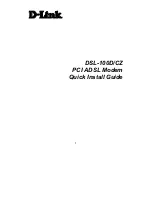
60
Network Design and Engineering Guide
2010-10-26
General Carrier Design
TDMA Carrier Design with ’TDMA Calculator’
’% of User Data Rate’ must be defined. In the case of ’1- FR voice’, select the FAD voice codec
to get the packet length automatically. The same is due for the ’4-VoIP’ field: select the VoIP
codec and get the predefined packet length automatically. Additionally it is possible to select
entry 'Custom', if a user defined average packet length for VoIP shall be used.
The information about user traffic composition and data packet lengths is used by the TDMA
calculator to derive the satellite link layer encapsulation overhead which is necessary to calcu-
late the carrier’s user data rate. By default traffic composition is assumed to be identical on all
channels. If it is necessary to define different values for the traffic composition or packet lengths
on indi-vidual carriers, in combo box ’Channel load enabled’ entry ’Yes’ has to be selected. Not
copied from the channel 1 data are the first 4 fields - they have to be selected manually for each
frequency channel.
Figure 2-41
TDAM Calculator - Define different traffic compositions
Time slot size optimization:
The TDMA calculator has a built-in functionality which allows the
optimization of the time slot sizes.
In combo box ’Time slot sizing: - ruled by’ choose
-
’1’ for slot size optimization depending on Frame Relay Voice (traffic type 1 FR Voice):
If this option is selected, the TDMA calculator defines the base gross container size and
slot time factor in such a way, that the resulting data rate per slot assignment will support
the transport of one or multiple Frame Relay voice calls per slot. The data rate required
for one FR voice call is defined by the selected FR voice codec.
-
’5’ or ’6’ for slot size optimization depending on traffic type ’5 IP RealTime’ or traffic type
’6 IP Non-RealTime’: If 5 or 6 is selected for slot size optimization, the TDMA calculator
defines the base gross container size and slot time factor so that the resulting time slot
container can transport one or multiple packets of the selected traffic type including the
satellite link layer framing. The packet size is assumed to be identical to the average
packet length specified in the corresponding traffic type definition.
2.6.2.1
Parameter Summary
i
-
The traffic type optimization is not supported for the traffic type 4 Voice
over IP (VoIP).
-
In networks with multiple carriers of different data rates a simultaneous
ideal optimization for all carriers is generally not possible. The
’TDMA Calculator’ tool is then selecting values of the base gross con-
tainer size and channel slot time factors so that the result will be the best
possible match for the selected optimization criterion.
Summary of Contents for SKYWAN IDU 7000
Page 1: ......
Page 2: ......
Page 6: ...Page intentionally left blank 2 Network Design and Engineering Guide 2010 10 26...
Page 12: ...Page intentionally left blank 8 Network Design and Engineering Guide 2010 10 26...
Page 16: ...Page intentionally left blank 12 Network Design and Engineering Guide 2010 10 26...
Page 22: ...Page intentionally left blank 18 Network Design and Engineering Guide 2010 10 26...
Page 76: ...Page intentionally left blank 72 Network Design and Engineering Guide 2010 10 26...
Page 134: ...Page intentionally left blank 130 Network Design and Engineering Guide 2010 10 26...
Page 138: ...Page intentionally left blank 134 Network Design and Engineering Guide 2010 10 26...
Page 144: ...Page intentionally left blank 140 Network Design and Engineering Guide 2010 10 26...
Page 153: ......
Page 154: ...www ndsatcom com...
















































